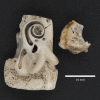The rat animal model for noise-induced hearing loss
- PMID: 31795685
- PMCID: PMC7480078
- DOI: 10.1121/1.5132553
The rat animal model for noise-induced hearing loss
Abstract
Rats make excellent models for the study of medical, biological, genetic, and behavioral phenomena given their adaptability, robustness, survivability, and intelligence. The rat's general anatomy and physiology of the auditory system is similar to that observed in humans, and this has led to their use for investigating the effect of noise overexposure on the mammalian auditory system. The current paper provides a review of the rat model for studying noise-induced hearing loss and highlights advancements that have been made using the rat, particularly as these pertain to noise dose and the hazardous effects of different experimental noise types. In addition to the traditional loss of auditory function following acoustic trauma, recent findings have indicated the rat as a useful model in observing alterations in neuronal processing within the central nervous system following noise injury. Furthermore, the rat provides a second animal model when investigating noise-induced cochlear synaptopathy, as studies examining this in the rat model resemble the general patterns observed in mice. Together, these findings demonstrate the relevance of this animal model for furthering the authors' understanding of the effects of noise on structural, anatomical, physiological, and perceptual aspects of hearing.
Figures
Similar articles
-
Noise trauma induced plastic changes in brain regions outside the classical auditory pathway.Neuroscience. 2016 Feb 19;315:228-45. doi: 10.1016/j.neuroscience.2015.12.005. Epub 2015 Dec 14. Neuroscience. 2016. PMID: 26701290 Free PMC article.
-
Enhancement of the Medial Olivocochlear System Prevents Hidden Hearing Loss.J Neurosci. 2018 Aug 22;38(34):7440-7451. doi: 10.1523/JNEUROSCI.0363-18.2018. Epub 2018 Jul 20. J Neurosci. 2018. PMID: 30030403 Free PMC article.
-
The effect of noise exposure during the developmental period on the function of the auditory system.Hear Res. 2017 Sep;352:1-11. doi: 10.1016/j.heares.2016.03.008. Epub 2016 Mar 16. Hear Res. 2017. PMID: 26994659 Review.
-
Effects of lifetime noise exposure on the middle-age human auditory brainstem response, tinnitus and speech-in-noise intelligibility.Hear Res. 2018 Aug;365:36-48. doi: 10.1016/j.heares.2018.06.003. Epub 2018 Jun 12. Hear Res. 2018. PMID: 29913342
-
The rat as a model for studying noise injury and otoprotection.J Acoust Soc Am. 2019 Nov;146(5):3681. doi: 10.1121/1.5131344. J Acoust Soc Am. 2019. PMID: 31795688 Review.
Cited by
-
Investigational Medicinal Products for the Inner Ear: Review of Clinical Trial Characteristics in ClinicalTrials.gov.J Am Acad Audiol. 2021 Nov;32(10):670-694. doi: 10.1055/s-0041-1735522. Epub 2022 May 24. J Am Acad Audiol. 2021. PMID: 35609594 Free PMC article. Review.
-
Music improves the therapeutic effects of bevacizumab in rats with glioblastoma: Modulation of drug distribution to the brain.Front Oncol. 2022 Oct 13;12:1010188. doi: 10.3389/fonc.2022.1010188. eCollection 2022. Front Oncol. 2022. PMID: 36313687 Free PMC article.
-
The impact of targeted ablation of one row of outer hair cells and Deiters' cells on cochlear amplification.J Neurophysiol. 2022 Nov 1;128(5):1365-1373. doi: 10.1152/jn.00501.2021. Epub 2022 Oct 19. J Neurophysiol. 2022. PMID: 36259670 Free PMC article.
-
A custom, low-cost, continuous flow chamber built for experimental Sargassum seaweed decomposition and exposure of small rodents to generated gaseous products.Heliyon. 2023 Aug 4;9(8):e18787. doi: 10.1016/j.heliyon.2023.e18787. eCollection 2023 Aug. Heliyon. 2023. PMID: 37636446 Free PMC article.
-
Early Intervention and Lifelong Treatment with GLP1 Receptor Agonist Liraglutide in a Wolfram Syndrome Rat Model with an Emphasis on Visual Neurodegeneration, Sensorineural Hearing Loss and Diabetic Phenotype.Cells. 2021 Nov 16;10(11):3193. doi: 10.3390/cells10113193. Cells. 2021. PMID: 34831417 Free PMC article.
References
-
- Altschuler, R. A. , Halsey, K. , Kanicki, A. , Martin, C. , Prieskorn, D. , DeRemer, S. , and Dolan, D. F. (2019). “ Small arms fire-like noise: Effects on hearing loss, gap detection and the influence of preventive treatment,” Neurosci. 407, 32–40.10.1016/j.neuroscience.2018.07.027 - DOI - PMC - PubMed
Publication types
MeSH terms
LinkOut - more resources
Full Text Sources


